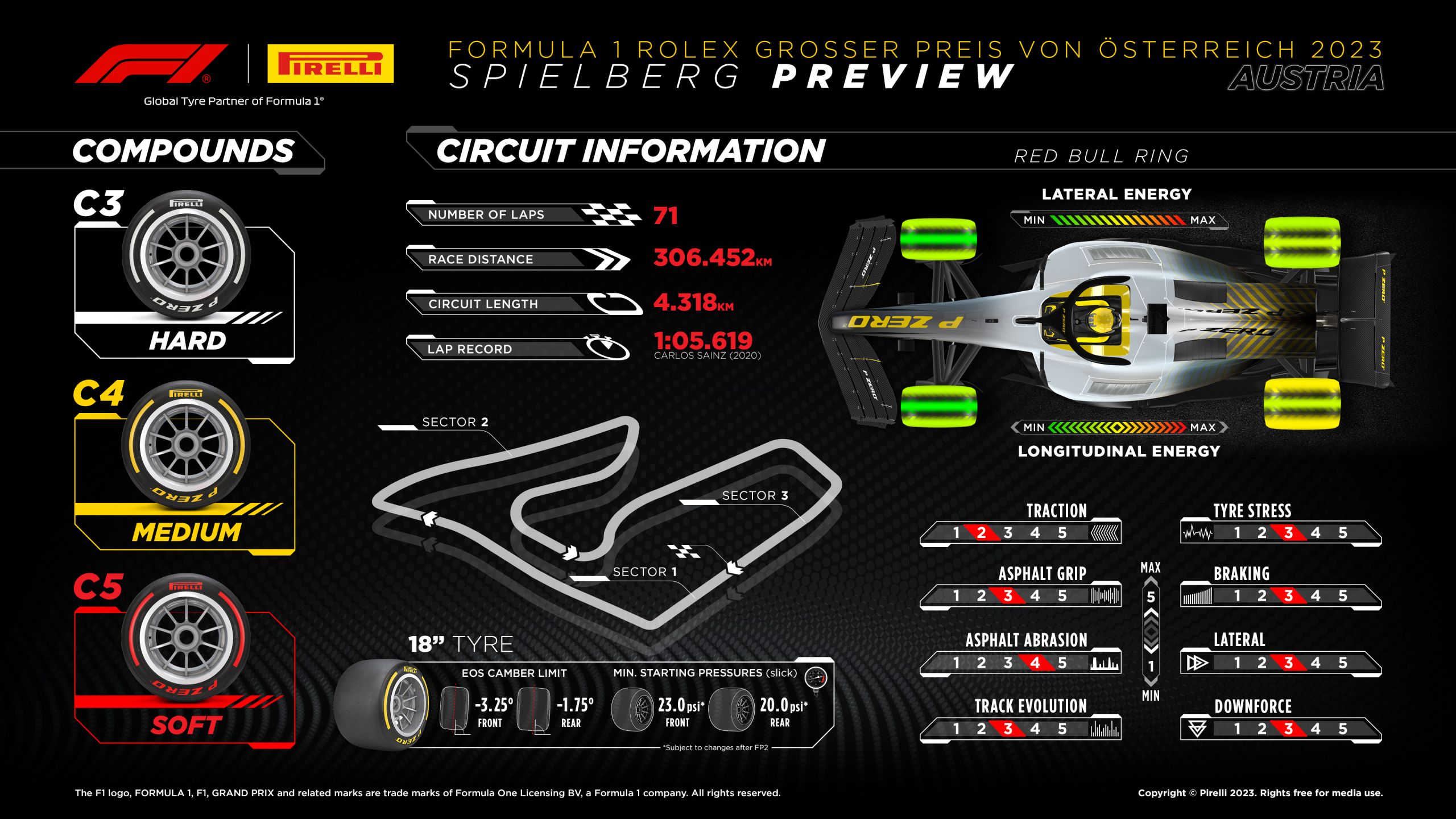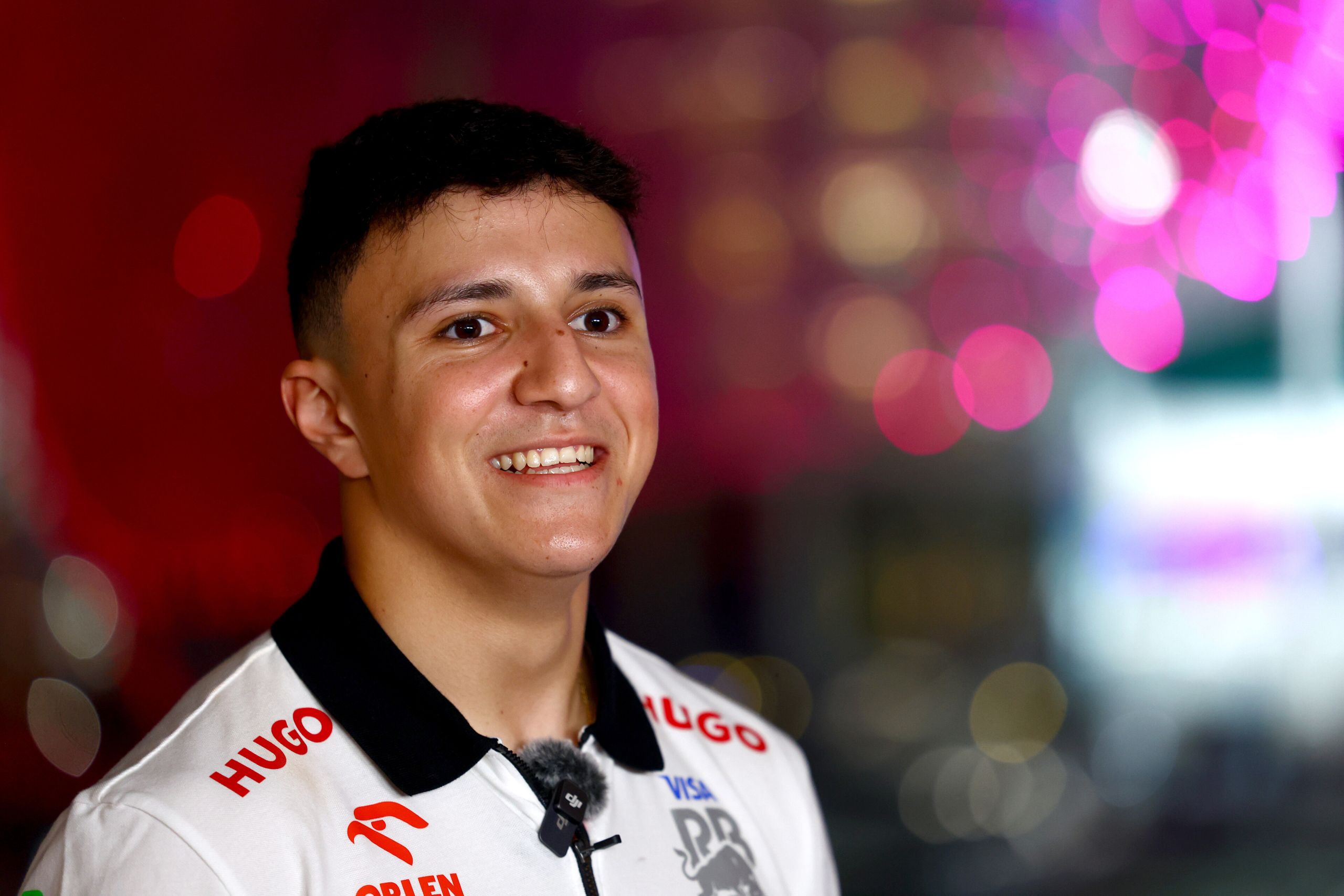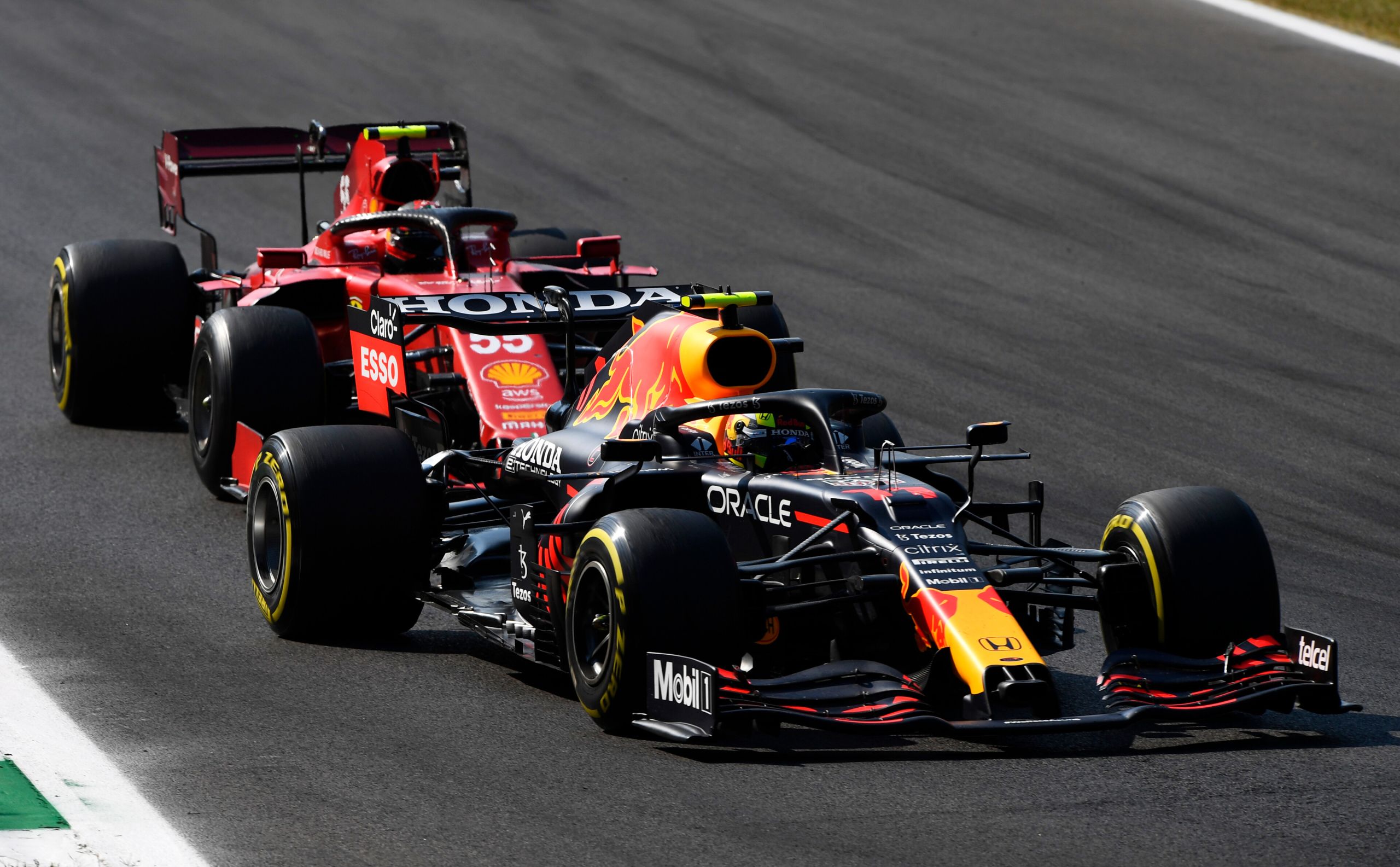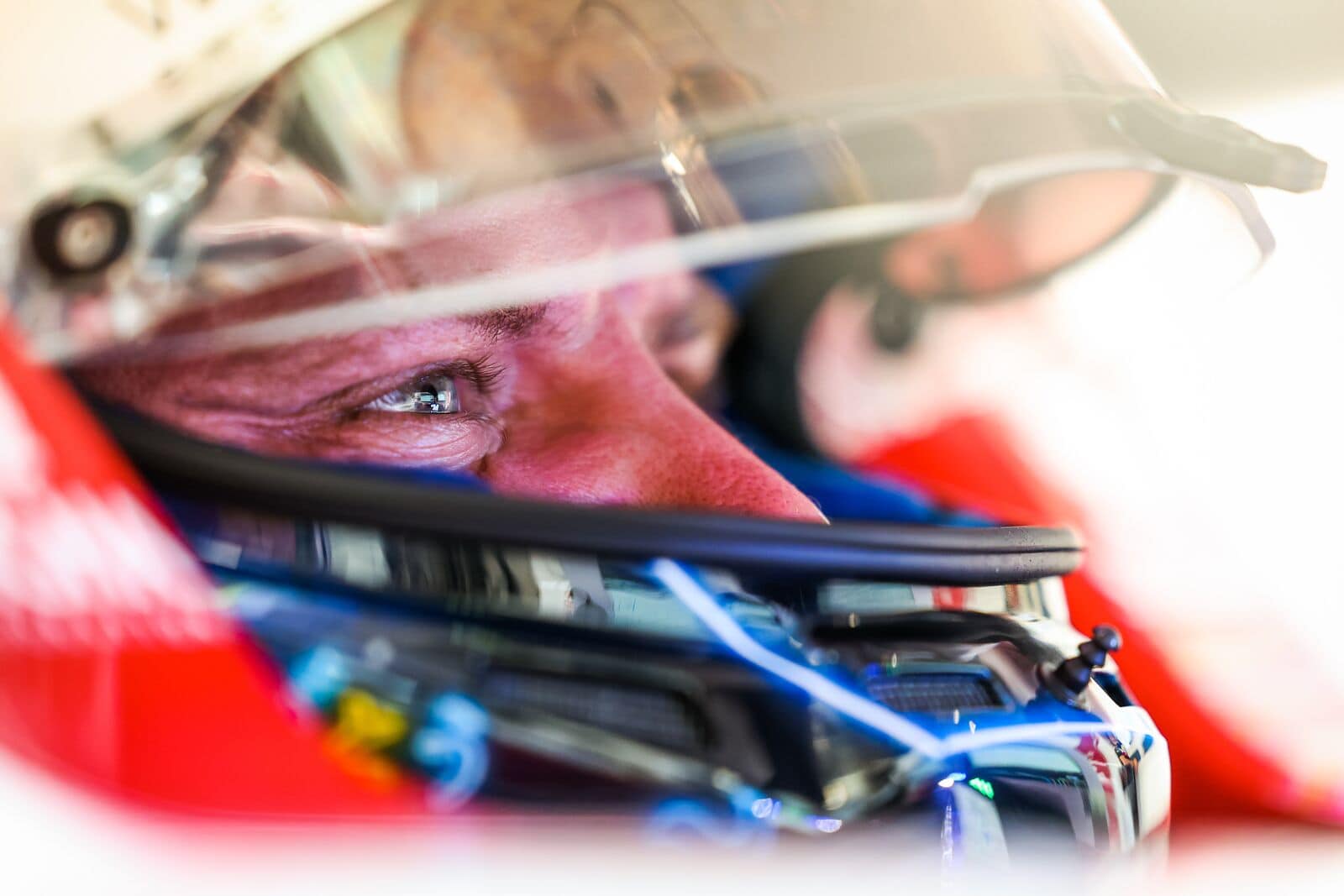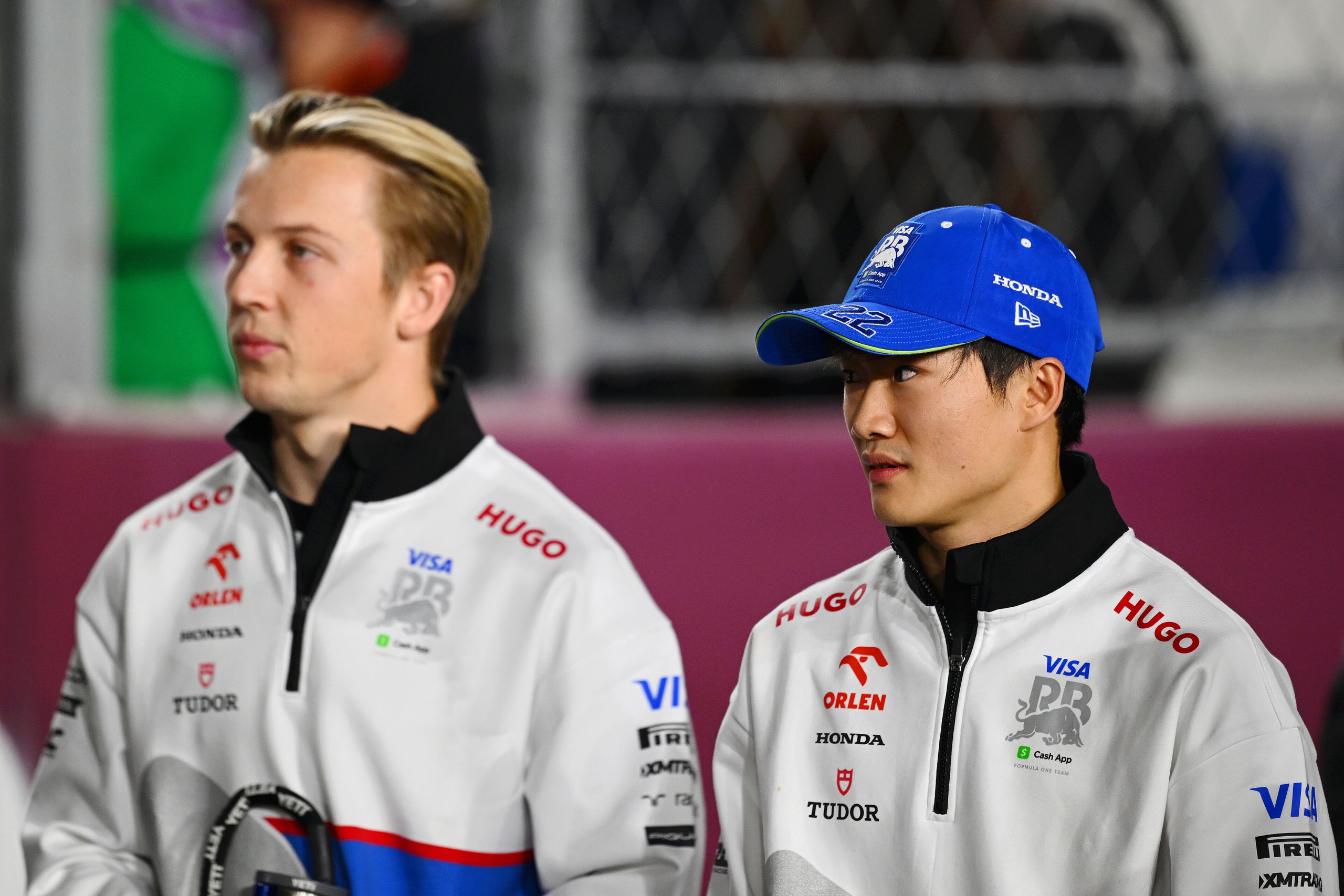
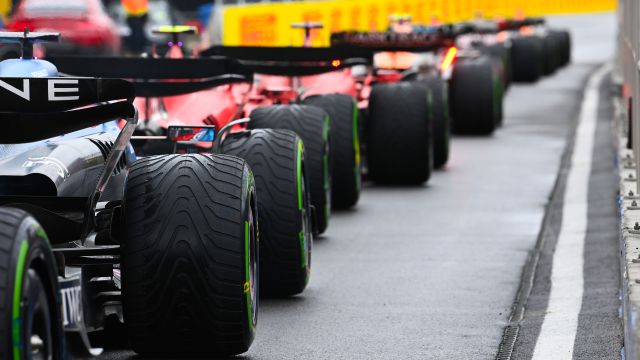
2023 Austrian Grand Prix: Selected Tyres – The teams will have the C3 compound as P Zero White hard, C4 as P Zero Yellow medium and C5 as P Zero Red soft at the 2023 Austrian Grand Prix. Just like the last race at Montréal, the three softest compounds in the Pirelli F1 range have been nominated.
The Spielberg weekend will be the second grand prix on the calendar featuring an F1 Sprint. Qualifying to decide the starting grid for the Grand Prix is scheduled for Friday afternoon, after a single free practice session in the morning. Saturday will instead be dedicated to the Sprint Shootout and the Sprint Race. During the three short sessions that make up the Sprint Shootout (lasting 12, 10, and eight minutes respectively) teams will have to fit new tyres and use the medium compound for Q1 and Q2. In Q3, only the soft compound will be used.
The Red Bull Ring has only 10 corners, with the shortest lap time of any track on the championship. The lap record is held by Ferrari’s Carlos Sainz, who completed lap 68 of the 2020 Styrian Grand Prix in a time of 1m05.619s, driving a Renault-powered McLaren on P Zero soft (C4) tyres.
The driver with the most wins on the current version of the Austrian track is Red Bull’s Max Verstappen, with four wins from the 18 races held since 1997. The most successful manufacturer is Mercedes with six wins, courtesy of Nico Rosberg, Lewis Hamilton, and Valtteri Bottas – who all claimed two races each.
Most drivers made two stops last year, starting on the medium ahead of two stints on the hard. There was plenty of overtaking, particularly in the midfield, with five cars competing for the places just off the podium.
The elevation changes at the Red Bull Ring put it second only to Spa-Francorchamps in terms of variation. There’s a change of more than 60 metres between the lowest point on the track – just before Turn 1 – and the highest point, after Turn 2.
Mario Isola – Pirelli Motorsport Director
“The Red Bull Ring is a circuit where tyres get no rest. The cars race through the track’s 10 corners in a lap time of just over a minute, and the few straights mean that there is little reprieve for the tyres. The asphalt has a fairly high micro and macro roughness, due to the age of the surface, while grip is high at the start of the lap. Traction and braking are key elements, while particular attention will have to be paid to managing tyre overheating. Drivers who manage not to cool their tyres properly may find it difficult to defend against attacks from rivals, especially in the first and last sectors. An important factor in this will be ambient temperature, with weather conditions traditionally somewhat variable. Last year’s race was largely a two-stopper using the medium and hard compounds, but a one-stopper could also be an option this year if degradation is not too high.”
2023 Austrian Grand Prix: Selected Tyres
